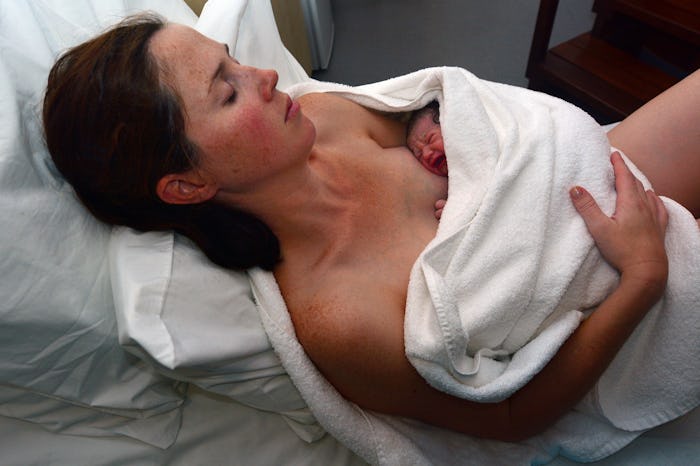Life

7 Myths About Vaginal Births People Should Stop Perpetuating
Imagining the details of how the birth of your child will go down is a moment most pregnant women play out in their head during the course of their pregnancy. As mystifying as it can seem, once you are the one who is pushing a baby out of your vagina, you start to consider this scenario with a little more detail than ever before. But not all sources are reliable. Even though modern medicine and childbirth have come a long way, there are still some myths about vaginal births that need busting.
You can thank television and movies for perpetuating most of these falsehoods about childbirth. The way women go into labor and babies are "born" on the big screen is far from what the real delivery room looks like. Often over-exaggerated and commonly made comical, these type of scenes are meant for entertainment, not education. Because of this misrepresentation being portrayed over and over, it's easy to think that birth goes only one way. But vaginal births are a different experience for every pregnant woman, and there is no set of rules that applies to all their deliveries.
If you've been worrying you're going to make a spectacle of yourself when you're water breaks, don't sweat it. That's just one of the seven myths about vaginal deliveries that you can erase from your memory now.
Myth #1: Your Water Breaks Like In The Movies
You know all those movie scenes when a pregnant woman's water breaks and it looks like a she just popped the world's biggest water balloon with her thighs? So not realistic. As The Bump pointed out, once your water breaks it feels more like a trickle than a burst. In fact, only about 10 percent of women's water breaks spontaneously, and most often the doctor does it in the hospital.
Myth #2: You Have To Request No Enema
When you're giving birth vaginally, there is enough going on down there already without adding an enema to the mix. According to Fit Pregnancy magazine, although some midwives have recommended this to start labor, an enema is not a routine part of a vaginal delivery that you need to be cautious of, or make a formal request to deny.
Myth #3: The Placenta Comes Out Right Away
The delivery of the placenta isn't as immediate as people might have you believe. It's true in some cases it comes rather quickly, but many times it can take as long as 30 minutes after delivery for the placenta to be delivered, according to Healthline.
Myth #4: Contractions Stop When You Start Pushing
Contractions are typically seen as the prelude to pushing, and disappear once you start active delivery. As Parents magazine pointed out, although they may come farther apart, contractions are still active during delivery of your baby.
Myth #5: All The Leakage Stops Right Away
After giving birth vaginally, it's going to be awhile before you can walk around without wearing a pad. "You'll have a vaginal discharge (lochia) for a number of weeks after delivery," as Mayo Clinic reported.
Myth #6: Being Dilated Means You're Almost There
Every pregnant woman is waiting to hear that she's 10 centimeters dilated because that's when the party's supposed to start, right? Not so fast. According to Pregnancy magazine, even once you've hit full dilation, you could still be pushing for up to two hours.
Myth #7: You Can't Deliver Vaginally If You're Pregnant With Twins
Just because you're having twins doesn't mean you'll end up with w C-section scar. As The Bump pointed out, many sets of twins are delivered vaginally. The biggest factor is usually if one of the babies is breech or not.